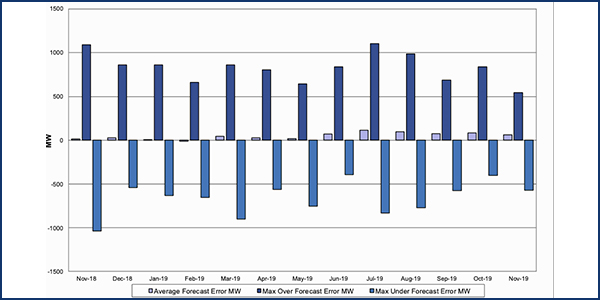NYISO’s Management Committee on Wednesday recommended that the Board of Directors approve creating a short-term reliability process (STRP) to evaluate and address reliability impacts.
Keith Burrell, the ISO’s manager of transmission studies, presented the proposal and said the STRP may result from both generator deactivation and transmission facility reliability needs identified in a quarterly short-term assessment of reliability (STAR) study.
The new setup would enable NYISO to respond to changes on the system in a timely fashion while providing a better structure than the ad hoc generator deactivation process to address observed needs, and improve workload management for the ISO and responsible transmission owners, according to Burrell.
Revisions would be applied to Tariff sections 23.4.5.6 and 30.4, which were posted on the ISO’s website on Dec. 17 at the request of the Independent Power Producers of New York.
Related Tariff changes would expand the generator deactivation rules to apply to non-market participants that possess the authority to decide whether or when to deactivate a generator. To address non-market participants, the revisions include changes to the generator registration documents and the creation of a new responsible generator party certification.
The proposed revisions include a de minimis threshold of 1 MW to excuse generators with a lower nameplate rating from the obligation to comply with the generator deactivation rules in the STRP before they are permitted to deactivate.
The ISO anticipates February 2020 board approval and would file revisions with FERC requesting a May 1, 2020, effective date. With FERC acceptance, the first STAR would commence July 15, 2020.
The 2020 Reliability Needs Assessment would incorporate the effects of the Tariff changes.
NYISO Strategic Plan 2020-2024
Executive Vice President Emilie Nelson presented NYISO’s Strategic Plan for 2020-2024, saying that stakeholders want the ISO to continue to be an authoritative source of information for policymakers.
“We heard that we need to focus on our planning processes and that the class year work needs to be streamlined,” Nelson said. “Passage of the Climate Leadership and Community Protection Act further emphasized the need to continue to think through strategic priorities for the next five, 10 and even 20 years.”
The new law (A8429) requires 70% of the state’s electricity to come from renewable sources by 2030 and for power generators to be zero-emitting by 2040. It also raises the installed solar target to 6 GW by 2025 and calls for the state to procure 9 GW of offshore wind by 2035.
CEO Rich Dewey said the board concluded that “we’re working on all the right stuff but wanted us to think about the pace of change.”
“Given CLCPA, there’s going to be tremendous pressure on the schedule, and we need to move more deliberately and quicker than we have in the past,” Dewey said. “If you look at how much renewable and distributed energy resources are going to need to come online to achieve the goals, the pace of change will be faster than anything we’ve ever seen.”
EMS Update, New Reliability Metrics
Dewey said NYISO is working to deploy by Feb. 1 a new energy management system and business management system, both delayed in October because of problems related to stability and synchronization of data. (See “New System Software by March,” NYISO Management Committee Briefs: Nov. 20, 2019.)
“We moved into our parallel test window today and are running two systems side by side,” Dewey said. “We want to be ready for deployment as early as possible in 2020, as early as Feb. 1, if the weather permits.”
COO Rick Gonzales highlighted the use of new graphs in the monthly operations report to reflect enhanced reliability metrics, with the ISO now measuring daily and monthly net load forecast performance against 30-minute and hour-ahead forecast error.
— Michael Kuser




